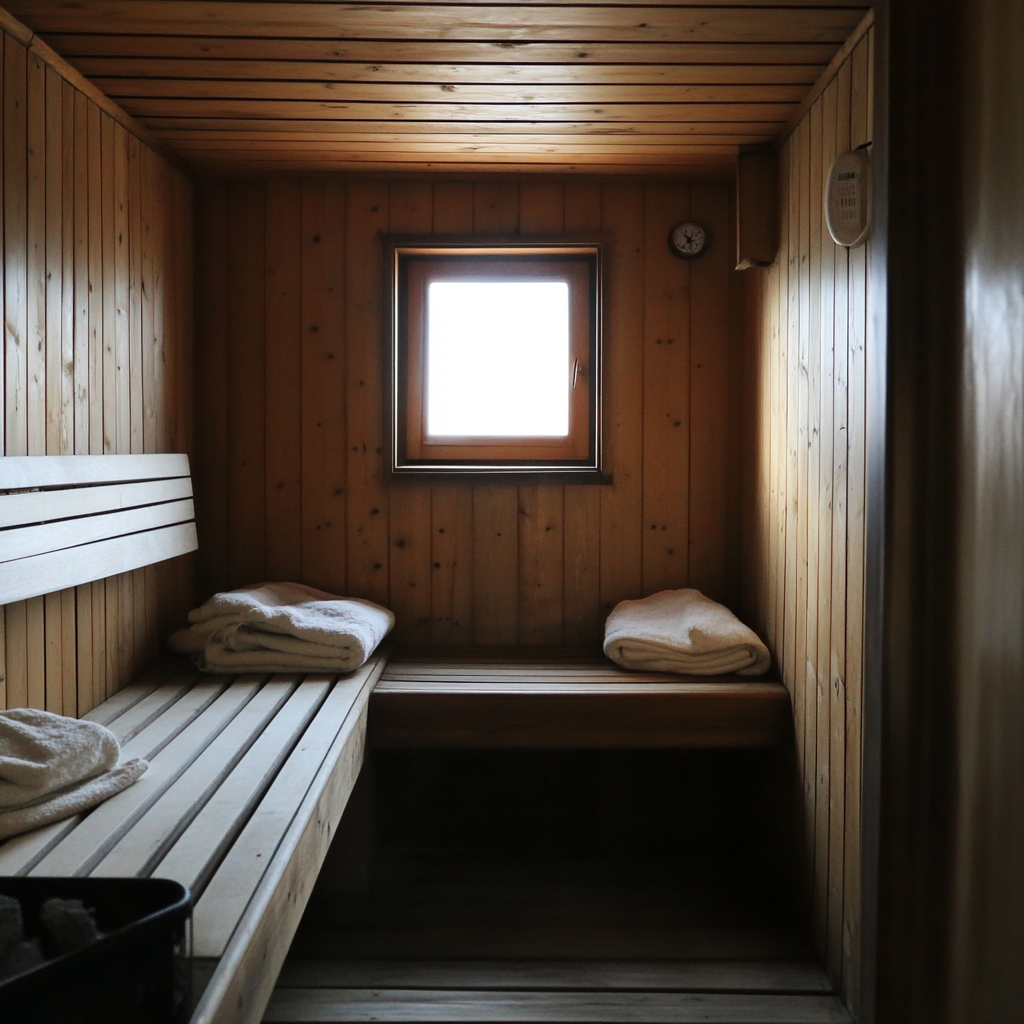Sauna & Ice Baths: The Time-Tested Wellness Duo for Vitality
Lucie
January 8, 2025

Introduction to Sauna & Ice Baths
In recent years, sauna & ice baths have gained immense popularity amongst wellness enthusiasts, often regarded as vital components of a holistic health regimen. These practices have deep historical roots, tracing back to various cultures with a pronounced emphasis on health and vitality. For instance, sauna culture has flourished in Finland for centuries, where the sauna is not just a bathing ritual but an essential part of social life and relaxation. Similarly, ice baths have found their place within ancient practices, where cold exposure was utilized for both physical rejuvenation and spiritual cleansing.
Both sauna rooms and ice baths provide unique physiological benefits that appeal to individuals seeking improved health outcomes. Sauna rooms, typically constructed from high-quality wood, employ heat to induce perspiration, which can enhance cardiovascular performance, detoxification, and relaxation. This experience is not only therapeutic but also offers the opportunity for mental clarity and emotional well-being. Conversely, ice baths involve immersion in icy water, which has been shown to reduce inflammation, accelerate recovery after intense workouts, and improve mood through the release of endorphins.
As the modern lifestyle becomes increasingly fast-paced, individuals are seeking alternative methods to manage stress and enhance physical performance. The integration of sauna sessions and ice baths into fitness regimens is now more commonplace, with many gyms and wellness centers providing dedicated spaces for these activities. Consequently, the merging of these ancient practices into contemporary living reflects a growing acknowledgement of the importance of overall well-being, encouraging individuals to prioritize their health through intentional self-care. This blog post will explore the myriad benefits that sauna rooms and ice baths offer, elucidating how they can contribute to a balanced and healthy lifestyle.
Health Benefits of Sauna Rooms
Regular use of sauna rooms offers numerous health benefits that contribute significantly to overall wellness. One of the primary advantages is detoxification. The high temperatures in saunas promote sweating, which aids in the elimination of toxins from the body, such as heavy metals and environmental chemicals. Research published in the Journal of Environmental and Public Health emphasizes the effectiveness of sweating in detoxifying the body, noting that regular sauna use can significantly improve the body’s ability to expel harmful substances.
In addition to detoxification, sauna rooms are known to enhance cardiovascular health. The increase in heart rate induced by the heat exposure mirrors the effects of moderate physical exercise, which can lead to improved circulation and lower blood pressure. A study conducted by the University of Eastern Finland revealed that frequent sauna bathing is associated with a lower risk of cardiovascular diseases. The authors of the study concluded that regular sauna use could, therefore, play an essential role in heart health maintenance.
Stress relief is another important benefit of sauna rooms. The serene environment and heat can facilitate relaxation, helping to reduce cortisol levels, which often rise in times of stress. According to research from the Journal of Physiological Anthropology, sauna bathing can elevate feelings of well-being and relaxation, contributing to lower anxiety levels.
Moreover, sauna rooms can significantly boost skin health. The increased blood flow during sessions improves skin hydration and may lead to a clearer complexion. Experts suggest that the exfoliating nature of sweating helps in removing dead skin cells, enhancing overall skin texture. A study highlighted in the Journal of Dermatological Treatment supports this claim, indicating that regular sauna use can promote healthier skin.
By incorporating sauna sessions into one’s routine, individuals not only improve their physical health but also enhance their mental well-being, creating a holistic approach to wellness.

The Science Behind Ice Baths
Ice baths, also known as cold water immersion, have garnered considerable attention in sports and wellness circles for their myriad physiological benefits. Research suggests that exposure to cold can significantly reduce inflammation, which is crucial for athletes seeking to recover from intense exercise. When the body is immersed in ice or cold water, the blood vessels constrict, reducing blood flow to inflamed areas. This process, known as vasoconstriction, is followed by vasodilation, or the widening of blood vessels, once the body warms back up. This cycle promotes the clearance of metabolic waste and accelerates recovery, enabling athletes to train harder and more frequently.
A study published in the *Journal of Sports Sciences* confirmed that cold water immersion after strenuous exercise can lead to a marked decrease in muscle soreness and inflammation. In practical terms, many professional athletes, including runners and football players, have integrated ice baths into their post-training routines, reporting an enhanced sense of recovery and readiness for subsequent workouts. One athlete recounted how his recovery time decreased significantly after committing to regular ice baths, allowing him to improve his training regimen without the debilitating side effects of soreness.
Optimal duration for ice baths typically ranges from 10 to 15 minutes, as longer exposure can lead to adverse effects, such as numbness and frostbite. It’s essential to approach this recovery technique with care; individuals should ensure the water temperature is around 50 to 59 degrees Fahrenheit. For those new to ice baths, starting with shorter durations or using ice packs on specific areas can offer a safer introduction to cold exposure. Ultimately, the practice of incorporating ice baths can result in improved energy levels, readiness for training, and overall wellbeing, making them a valuable tool in the athletic community.
Combining Sauna and Ice Bath for Optimal Health
While ice baths offer incredible benefits, it’s important to follow safety guidelines to avoid any potential risks. The ideal water temperature for an ice bath is between 50°F and 59°F (10°C to 15°C). It’s essential to monitor the temperature with a thermometer before getting in.
For beginners, start with short durations, around 1 to 3 minutes, and gradually work your way up to 5 to 10 minutes as your body adapts. Make sure to focus on your breathing as you immerse yourself in the cold water—controlled breaths can help reduce discomfort. If at any point you feel too uncomfortable or numb, exit the bath immediately.
Most people benefit from ice baths once or twice a week, but athletes or those engaging in intense physical activity may find it helpful to use ice baths more frequently to enhance recovery.



